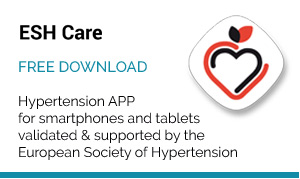Hypertension 2008
Produced by all types of human nucleated cells, cystatin C is a serum protein found in virtually all tissues and bodily fluids. Levels of cystatin C are independent of height, weight, muscle mass, age, and gender. Since this protein is removed via renal glomerular filtration, its concentration in blood correlates with the glomerular filtration rate (GFR) and is used as a biomarker of kidney function. Meta-analysis has shown cystatin C to be superior to the traditionally used measure of serum creatinine (SCr) level as a marker of GFR and renal function. (1)
Since renal dysfunction increases the risk of death and cardiovascular (CV) disease, researchers have considered whether cystatin C is associated with such risk. In a study of 4,637 patients from the Cardiovascular Health Study, investigators found cystatin C to be a strong and independent predictor of death and CV events in the elderly, which is not true of SCr. (2) More recently, the addition of several biomarkers – including cystatin C as a marker of renal function – to a model of established risk factors improved risk stratification for death from CV causes in men with or without established CV disease. (3)
One key CV risk factor is metabolic syndrome. Although kidney disease is not normally associated with metabolic syndrome, researchers have sought to determine whether there is any association between cystatin C level and metabolic syndrome. Servais et al. included 925 dyslipidemic patients in a prospective study that involved clinical and biological assessments at each visit.4 Of the total patient population, metabolic syndrome was present in 26% and these patients had a significantly higher cystatin C level than did individuals without metabolic syndrome in the study (p < 0.0001), and the level of cystatin C was independent of SCr and creatinine clearance. Additionally, cystatin C increased progressively as a function of the number of metabolic syndrome components present in a patient.
Is the association between cystatin C and metabolic syndrome and other CV risk factors equally strong in hypertensive patients? To find out, Luis Vigil, MD, Hospital de Móstoles, Madrid (Spain), and colleagues conducted a cross-sectional, prospective study of 619 hypertensive patients, who were a mean age of 58.6 years, primarily male (53.1%), and were receiving an average of 2.02 antihypertensive agents. More than one-third also were on lipid-lowering treatment, 17.5% had type 2 diabetes mellitus, 14% were current smokers, and 19.5% were receiving secondary prevention for a previous event or disease.
Overall, 281 (45.4%) had metabolic syndrome as defined by the ATP-III criteria. As expected, these patients were significantly older and with a higher body mass index (BMI), systolic blood pressure, blood glucose, uric acid, microalbuminuria, and C-reactive protein (CRP). In terms of renal markers, there was no significant difference in SCr or estimated GFR rates between patients with or without metabolic syndrome, but those with metabolic syndrome had significantly higher levels of cystatin C (0.94 mg vs. 0.87 mg; p < 0.0001).
Adjusted for age, gender, and GFR, cystatin C significantly and positively correlated with various indicators of metabolic syndrome. Age also was strongly correlated with cystatin C and estimated GFR had a strong negative correlation. In a multiple regression analysis of cystatin C and CV risk factors, several factors emerged as independent determinants of cystatin C. And, in this study, too, the level of cystatin C rose significantly as the patient’s number of metabolic syndrome components increased.
Based on the results, the researchers stressed that measuring cystatin C as a marker of renal and cardiovascular risk, particularly metabolic syndrome, may be “a useful tool” in a hypertensive population.
References:
- Dharnidharka VR, Kwon C, Stevens G. Serum cystatin C is superior to serum creatinine as a marker of kidney function: a meta-analysis. Am J Kidney Dis. 2002;40:221-6.
- Shlipak MG, Sarnak MJ, Katz R, et al. Cystatin C and the risk of death and cardiovascular events among elderly persons. N Engl J Med. 2005;352:2049-60.
- Zethelius B, Berglund L, Sundström J, et al. Use of multiple biomarkers to improve the prediction of death from cardiovascular causes. N Engl J Med. 2008;358:2107-16.
- Servais A, Giral P, Bernard M, et al. Is serum cystatin-C a reliable marker for metabolic syndrome? Am J Med. 2008;121:426-32.






